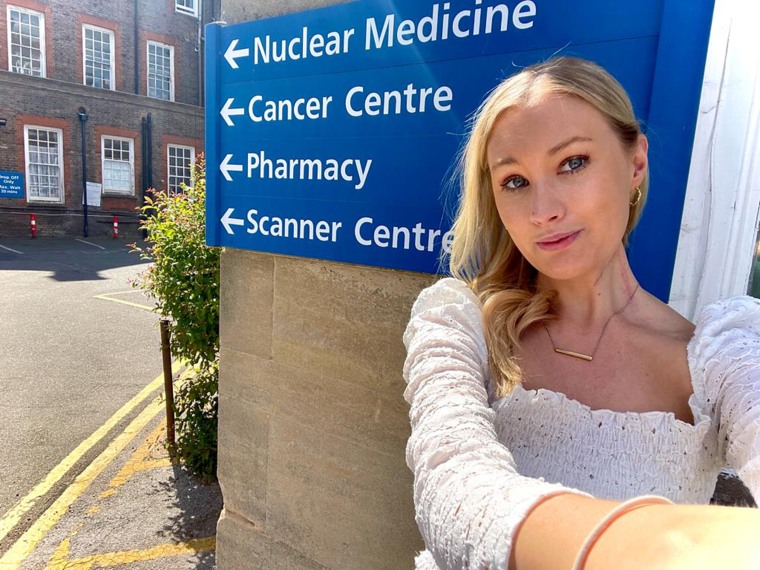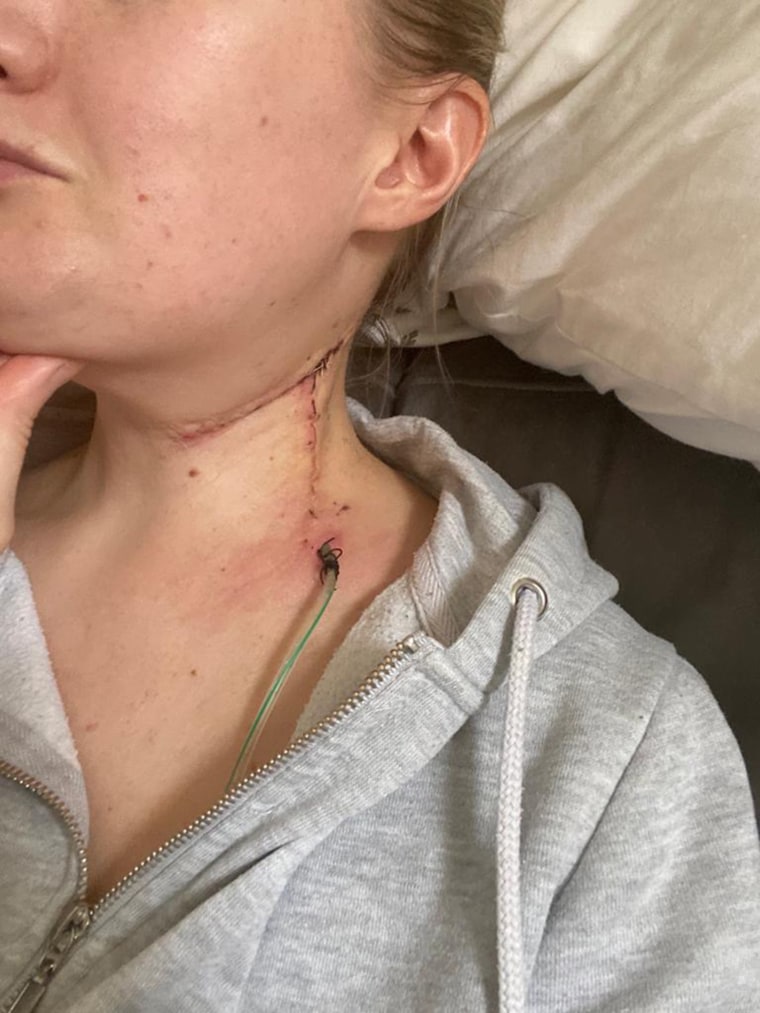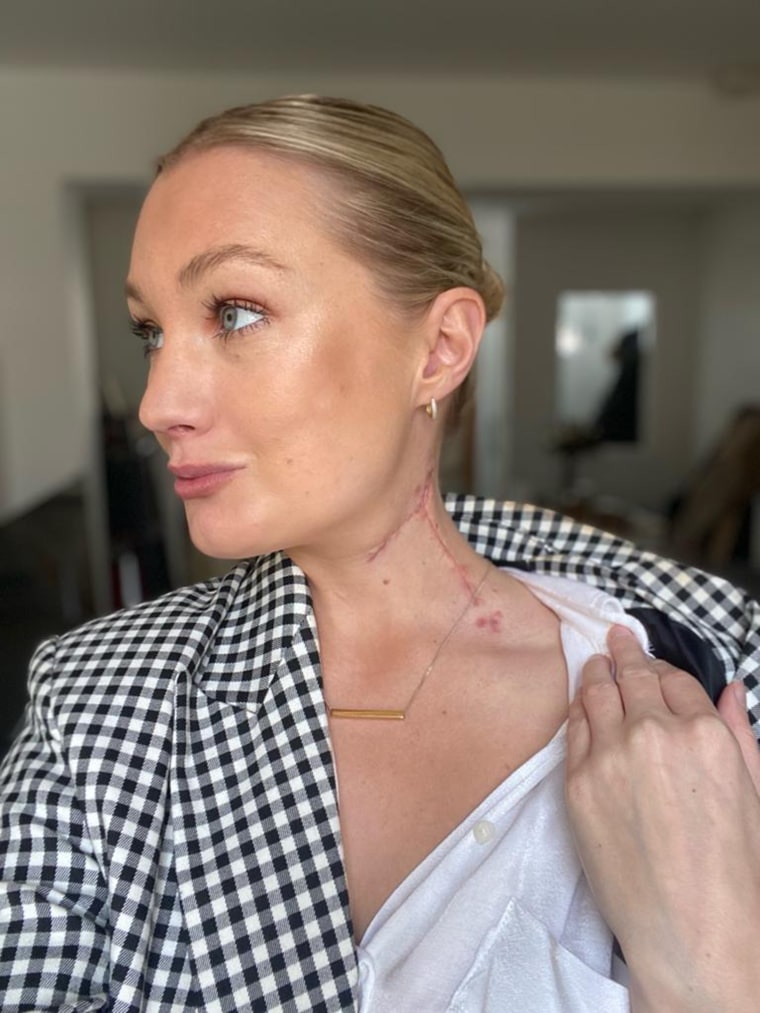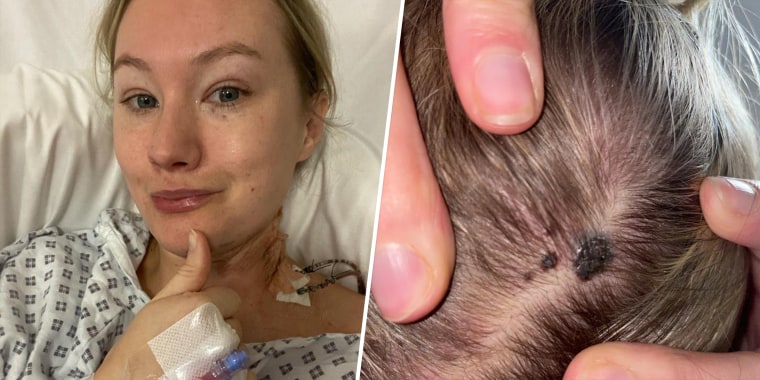A British journalist who noticed a black mole on her scalp that turned out to be melanoma, the deadliest form of skin cancer, said a dermatologist initially told her “it looked fine,” while another doctor diagnosed it as a “fungus.”
Sarah Lee, who works for the BBC in London, kept searching for answers, particularly after the ominous dark spot in her hair part developed nearby “satellite” moles within months.
Still, doctors told her that at 29, she was too young to have skin cancer and that it was almost impossible to get melanoma on the scalp because hair blocks the sun’s ultraviolet rays, Lee wrote in an essay recounting the ordeal.
Both of those statements are not true, said Dr. Adam Friedman, professor and chair of dermatology at George Washington School of Medicine and Health Sciences, who did not treat Lee.
“If I hadn’t kept pushing on, I might be in a very different state. I might be on my last few years of my life right now,” Lee told TODAY.
“(The fungus) was the most bizarre diagnosis I could have had in the whole experience and it’s all quite worrying because these are the people who are meant to know these things.”

Photo reveals mole
She first noticed the pea-sized mole in July 2021 when she took a photo of her scalp to see how dark her roots were after not highlighting her hair for a long time during the pandemic. Lee knew it was a new spot and her “heart sank” when she saw the very dark blue-black color, she recalled.
“You don’t need to be an expert to know that that was bad,” Lee noted.
Friedman said the photos and the subsequent progression of the mole “scream malignancy to me.”
Still, the dermatologist Lee was referred to said the spot “looked fine” and told her she was too young for skin cancer. That’s not true — “in fact, melanoma is one of the fastest rising and most common skin cancers in women around the age of 30,” Friedman noted.
As for the location on the head, Friedman said he regularly sees both non-melanoma and melanoma skin cancers on the scalp because people often don’t wear hats or use sunscreen on their hair part.
'Satellite' moles appear
After that dermatologist visit in late July 2021, Lee said she went home relieved and happy.
“I trusted him because he’s a specialist. He probably sees thousands of moles every week. I was satisfied with what he said to me,” she recalled. “But then (the mole) started to grow and multiply quite quickly… I just got panicky when I started seeing the little moles growing next to it.”
Such "satellite tumors" in nearby skin can be a sign the melanoma is spreading, according to the American Cancer Society.

In December 2021, she sent a photo of the progression to her general practitioner. In a phone conversation about it, she recalled him saying, “I’ve looked at the picture, there’s nothing to worry about, it looks like a fungus and it’ll probably go away on its own.”
There are fungi that can produce melanin and give a black appearance, but they wouldn’t look like this, Friedman said.
Lee didn’t believe the fungus diagnosis. She arranged to get another appointment with a different dermatologist.
“She took one look at my head and she said, ‘I’m really concerned about these moles on your head,’” Lee recalled.
Melanoma diagnosis
All of the moles — including the primary tumor and four satellite moles — were removed just before Christmas. In January, Lee was diagnosed with stage 3 malignant nodular melanoma.
The cancer had been growing all the way down to her skull, so she needed another surgery to scrape the tissue off right down to the bone to get clear margins, Lee said.
Doctors also removed 24 lymph nodes in the left side of her neck when scans showed the cancer had spread there as well.

Lee now has to take two types of targeted therapy — dabrafenib and trametinib — for a year to prevent a recurrence. The drugs initially came with “brutal” side effects that left her violently sick, but five months into the therapy, she said she’s doing much better.
Lee wondered how she developed melanoma on her scalp since she grew up in rainy Wales and wore sunscreen whenever she was in the sun.
Friedman said that while UV radiation exposure is the No. 1 external cause of skin cancer, radiation that comes through even on cloudy or rainy days also plays a role. “The scalp is a chronically exposed site to the sun that often doesn’t get the TLC our faces do with sunscreens or moisturizers with sunscreens,” he noted.
Genes are also a factor, though Lee said she has no family history of skin cancer.

When Lee called her general practitioner to let him know his diagnosis was wrong, she said his office simply responded with a curt “thank you for calling.” When she contacted the first dermatologist, his boss noted they reviewed her case and acknowledged “they missed my diagnosis,” Lee said.
The least the dermatologist could have done was just to remove the spot, she noted.
Friedman agreed. “Patients often are the best judges of what is normal and abnormal for their skin,” he said. If they notice a suspicious spot, a skin biopsy is usually the simplest way to diagnose or rule out cancer, he added.
Lee is back at work and staying positive. After being diagnosed, her medical care has been exceptional, she said. There are no signs of cancer in her body, but she has to stay vigilant and undergo regular scans.
“This will be my life now — worrying whether it’s come back,” Lee said. “It has completely changed my outlook on things.”

